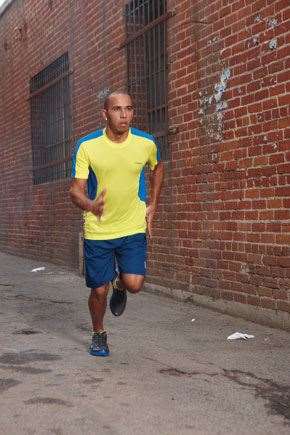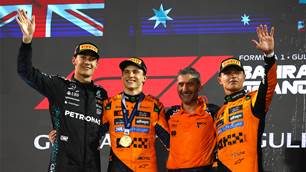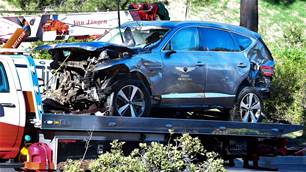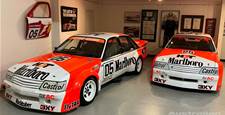If Elite Motor Racing Drivers aren’t athletes, why don’t we ever see any podgy ones?
 Main Image by Getty Images, Others Courtesy of Reebok
Main Image by Getty Images, Others Courtesy of Reebok
If Elite Motor Racing Drivers aren’t athletes, why don’t we ever see any podgy ones?
IF ELITE MOTOR RACING DRIVERS aren’t athletes, why don’t we ever see any podgy ones? Further, if Formula One isn’t a “real” sport, why does one of its biggest superstars, Lewis Hamilton, have to put himself through up to five hours of torturous cardio and resistance training each day? (After all, success depends on how fast the car is, right?) So goes the argument of the ignorant F1 outsider. But as we saw in last month’s Australian F1 GP in Melbourne through Mark Webber’s and Daniel Ricciardo’s violently shaking helmet cams, piloting one of these screaming road jets is as rough on the body as being hit by a front row forward. McLaren’s Hamilton (2008 world champion) and his globe-trotting, starlet-dating fellow superstars of the wheel know that going into an F1 season even the slightest bit physically underdone means not only slow lap times, but the certainty of G-force-created whiplash and serious neck, torso and leg trauma. If, after taking in Hamilton’s off-track training regime, which he outlined to Inside Sport at a Reebok promo event in Sydney ahead of the Oz GP, you’re still unconvinced that F1 is a sport contested by athletes and not mere steering wheel holders, you’re a hard sports fan to please.
SCOUT’S MOTTO
“I’ve never gone into a season underprepared. That’s why I have a trainer. You have to be in it to win it. You can’t do it half-arsed. You have to do it properly. I’ve worked with people from all different racing disciplines, whether it be go-karting, etc ... The other day I did a media event and took people around in a GT car and they couldn’t believe how hard it was to keep their heads up and control themselves when I was driving. I was completely in control but they were all over the place.”
GETTING PHYSICAL
“You wouldn’t believe how physical the sport of Formula One is; no one believes it. It’s massively mentally demanding, too. During our pre-season, we’ll train between four and five hours a day. Our regime involves a lot of core stability work. We don’t have to be bulky or muscley, but we do have to keep our weight low while maintaining strong endurance muscles. So that means a lot of repetitions, some cycling, hiking, cross-country skiing and running. We might run for an hour and 40 minutes a day. We do long, long runs. Sometimes our runs are at a fast pace, sometimes they’re slow. Our aim is to peak physically before the first race of the season.”
 Main Image by Getty Images, Others Courtesy of Reebok
Main Image by Getty Images, Others Courtesy of ReebokWINTER WARMERS
“In the winter we’re training a good four hours a day, which might be made up of a two to two and a half-hour cross-country ski or a three-hour hike, then we’ll go into the gym for an hour to an hour and a half. In the gym we do a lot of abdominal work, which I hate. We do quite a lot of pull-ups, dips, plank ... again, a lot of stuff for our core stability ... Sitting down, having the medicine ball thrown at you and catching it in different areas.”
BANGED UP
“Sometimes you are massively spent after a race, other times you aren’t. There have been races I have won where I feel I could go another race! Sometimes I’m just dead. Malaysia, for example; it’s just massively hot, humid, crazy. You’re in thermal underwear to your neck and also gloves, a twin-layered suit, a two-layered balaclava, then a helmet. You’re in a cockpit, which is like a sauna ... you sweat buckets.
“You generally take a day or two to recover after a race before getting back into it again. You do recovery runs, or a good swim to burn
off the lactic acid.”
FEELING THE FORCE
“You’re safely strapped into the cockpit in the car, but the thing is, the forces you are put under are ridiculous. When we’re talking about ‘G forces’, for us, it’s a multiple of our body weight. Under braking, when you’re in the car, you can hit the brakes with all your might and the car will not lock up. You can hit the pedal so hard, that all your body weight shoots forward. You’re hitting six Gs; that’s six times the weight of your head and the rest of your body. All this requires high strength. You get bruises the first time you’re back in the car after a winter, but also when you’re going through corners ... When you’re going through a right-hander, you have to keep modulating the throttle, but the weight on your leg is still immense because you’re pulling five Gs. The weight on your arm is immense because you’re pulling five Gs, and the same for the rest of your body.
“You need the strength to be able to cope with this force and hold it solid. You have 15-25 corners per lap and you do that God knows how many times ... 65 times. It’s just non-stop. When you reach the straight, you’re able to have a ‘breather’, but the straight doesn’t last long ‒ only a couple of seconds.”
HEAD-STRONG
“You can imagine the stress all this puts on your head and neck, so to strengthen my neck, I have a spare helmet and I’ll put 10kg on the top of it and lay off the end of a bench press or a bed and do lots of repetitions of head and neck movements. Sometimes my trainer will sit on my legs and I’ll lift my head and then lift – from the hip up – my upper body. There is another version of this exercise, but it’s front-on. My trainer will tell me to lift my
head up and then hold that position – for two minutes with 10kg on my head. You wouldn’t believe how tough it is on the muscles. Those neck exercises are the hardest ones.
“I don’t have this problem any more, but when I first started out in Formula One, I’d
get to the middle or three-quarters of the
way through a race and I’d be really struggling to hold my head up − it’s that demanding on your neck.”
 Main Image By Getty Images, Others Courtesy of Reebok
Main Image By Getty Images, Others Courtesy of ReebokFUELLING UP
“Generally, I’m always on a diet. I always have to watch what I eat; I always have to take notice of how many calories I take in per day. I’d love to enjoy some chocolates or other sweets, but unfortunately I don’t get to have any of that stuff. We eat a lot of salads, a lot of fish, quite a bit of pasta – not too much, though.”
“The night before a race I’ll have a big bowl of pasta, or brown rice, some fish or chicken ... No desserts, unfortunately. I carry around a bunch of Lucozade health bars which I eat before a race. In the final hours before the big event, I’ll have some chicken and rice. I won’t eat it all ‒ just a little bit of what I’m served up. I don’t like driving on a full stomach; you feel the food you’ve just eaten moving around inside you – it’s not that comfortable.”
LIQUID ASSETS
“Staying hydrated is really important for a Formula One driver. You have to drink two to two and a half litres of liquids before a race; you can lose up to four kilos in body weight during a grand prix just in liquids. After the race you’re just trying to catch up on what you’ve lost. But then, you know, in some GPs you do have a bottle in the car which you’ll drink from cautiously during a race.”
‒ James Smith
Related Articles

Gallery: 2025 Bahrain Grand Prix

Gallery: 2025 Chinese Grand Prix













